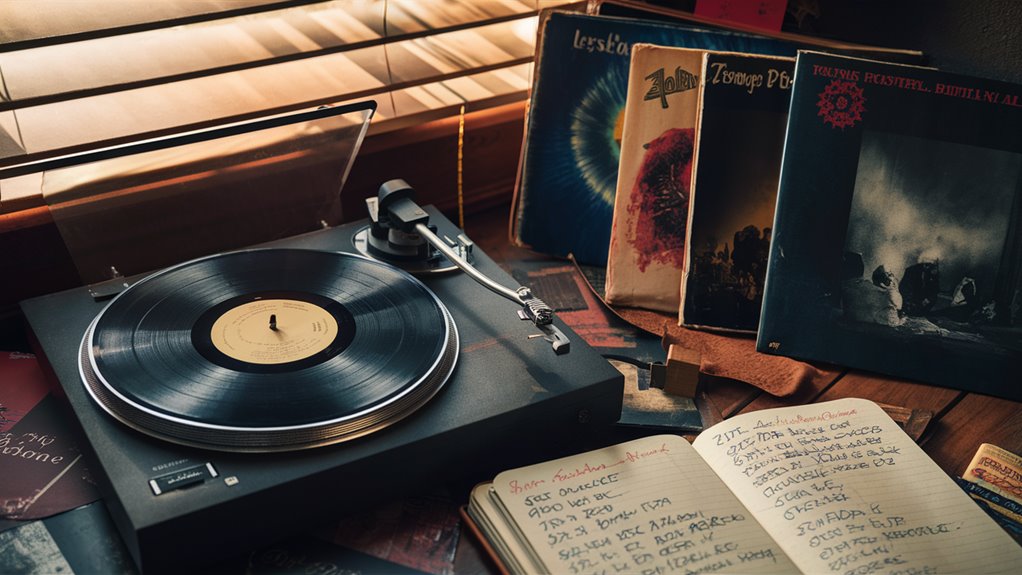The Best Songs for Deep Voices

Top Songs for Bass-Baritone Singers
Deep voice singers have a special gift that can add deep, rich tones to certain types of songs. The best way to show off your low voice is to pick songs that fit your voice type and help you sing better.
Must-Know Deep Voice Songs from Different Genres
Johnny Cash’s “Ring of Fire” is a classic song for deep voices, showing off strong bass singing. Leonard Cohen’s “Hallelujah” lets singers dig deep into their emotions and hit low notes, while Barry White’s “Can’t Get Enough of Your Love” is perfect for a sexy bass-baritone sound.
Things Deep Voice Singers Should Focus On
The best vocal range for deep singers is usually between E2-G2. These singers should work on:
- Belly breathing
- Making throat muscles loose How to Pick the Perfect Karaoke Song for Your Voice
- Changing vowel sounds a bit
- Smooth voice changes
How Deep Voices Fit into Different Music Styles
Deep voices are great for many music styles:
- Country: It’s all about the story and realness.
- Rock: Gives power and a tough sound.
- R&B: Brings out smooth, deep tones.
Learning these songs and focusing on these tips will let your deep voice truly shine and become strong in many types of music.
Classic Songs for Bass Voices
Classic Songs for Deep Voices: A Full Guide
Famous Bass Performances
Deep-voiced singers have often led in music with their unique bass sounds. Johnny Cash’s “Ring of Fire” and Leonard Cohen’s “Hallelujah” are perfect for those with low voices, setting high standards in singing.
Songs for Deep Love
Barry White’s “Can’t Get Enough of Your Love, Babe” shows how deep voices can create a close feel in music. Elvis Presley’s “Can’t Help Falling in Love” shows how well another strong baritone voice can sing love songs. Tom Waits’ “Downtown Train” and Nick Cave’s “Into My Arms” use rough bass tones to express real feelings.
Expert Skills for Low Voices
Setting the Mood with a Deep Voice
Jim Morrison’s great work with The Doors, mostly in “Riders on the Storm,” shows how a deep voice can make a song feel dark and heavy.
Essential Study for Low Voices
Bill Withers’ “Ain’t No Sunshine” and Louis Armstrong’s “What a Wonderful World” are key for learning how to sing properly and use your voice in the best way. They show how to put your voice in the right spot and fill up the sound with deep tones.
Country Music for Bass Voices
A Guide to Country Music for Low Voices
How Deep Voices Made Their Mark in Country
Country music loves low voices for their strong impact. Singers like Johnny Cash and Josh Turner are known for their profound deep singing, making history in country music.
Songs Every Deep-Voiced Singer Should Know
Timeless Country for Bass Voices
- “Ring of Fire” – Johnny Cash
- “God’s Gonna Cut You Down” – Johnny Cash
- “Forever and Ever, Amen” – Randy Travis
- “I Believe in You” – Don Williams
Modern Hits for Deep Voices
- “Your Man” – Josh Turner
- “Long Black Train” – Josh Turner
- “Just Fishin'” – Trace Adkins
- “Songs About Me” – Trace Adkins
How to Sing Well with a Deep Voice
Doing well with these songs means you need:
- Strong breath control for long, deep notes
- Clear words in a low range
- Feelings shown while keeping voice strong
- True telling of the song’s story
- Good use of your deepest voice parts
This song list is perfect for deep-voiced singers wanting to get better at country while keeping it real.
Rock and Metal for Bass Voices
Mastering Deep Voices in Rock and Metal

Well-Known Bass Singers
Gothic metal’s deep sound came from Type O Negative’s Peter Steele, whose super deep voice brought a new feel to music. His big moments in “Black No. 1” and “Christian Woman” set new levels for very low singing in heavy music.
Influences in Metal and Rock
Rammstein’s Till Lindemann shows perfect control in his baritone voice with songs like “Sonne” and “Du Hast,” cutting through heavy instrument sounds. The legendary Jim Morrison brought new depths to singing in songs like “Riders on the Storm.” 베트남 나이트라이프 필수 정보
New Ideas in Rock with Deep Voices
Rocks keeps changing with new deep voices. Crash Kings’ “Mountain Man” and Volbeat’s “Still Counting” show how Michael Poulsen’s unusual baritone mixes old rock sounds with new metal styles. Devin Townsend’s wide range in “Kingdom” and Type O Negative’s “Everyone I Love is Dead” show how mixing different voice levels makes music more complex and keeps high quality singing.
Soul and R&B Classics for Low Voices
Great Soul and R&B for Bass-Baritones
Deep Voices That Shaped Soul and R&B
The deepest voices in soul changed rhythms and blues with great skill and deep sounds. Barry White set the top standard with his bass-baritone voice in “Can’t Get Enough of Your Love, Babe,” where he mixes talking with singing.
Sophisticated Soul Voices
Isaac Hayes changed soul music with his deep voice in “Walk On By,” using full orchestra sounds behind his singing. The great Brook Benton showed how low voices can fill a song like “Rainy Night in Georgia,” making a close feeling that many singers aim for.
Today’s Top Deep Soul Singers
Teddy Pendergrass is known for his big baritone in songs like “Turn Off the Lights” and “Love T.K.O.,” singing with deep feelings. Lou Rawls teaches voice control with “You’ll Never Find Another Love Like Mine,” important for any deep-voiced singer. These songs are key in learning to sing low while keeping true R&B feeling.
Tips on Singing with a Deep Voice
How to Perform Better with a Deep Voice: Expert Tips
Main Things to Learn for Deep Voice Singing
Breathing from the belly is key for strong deep voice singing. Good breath support makes sure all low tones are even and full. Keeping the throat muscles loose helps the deep voice sound its best and keeps you from hurting your voice when hitting low notes. Holding your voice in the right place helps you keep singing well without damage.
More Voice Skills to Work On
Changing vowel sounds a bit is key for hitting the deepest notes right. Making little changes in how your mouth and throat are shaped can help your voice resonate better. Keeping your soft throat parts high and your throat open sets up a good space for low sounds. Knowing your voice’s natural range stops you from straining it. Knowing and using your real vocal range helps you practice and perform safely. Working on mixed voice singing lets you move between low and high notes without breaks in your voice.
Making Your Performance Better
Being exact with your pitch is extra important for low voices. Regular practice with tuners helps keep control over your low notes. Checking your singing on recordings can help make your skills better. Keeping track ensures you use the right techniques and keep your voice healthy. By using these advanced voice methods, singers can reach deep, rich tones in their low range while keeping their voices strong and ready for more.




